Discerning Palates Assemble at Family-run Kibakubo
Published: August 5, 2020
Izakaya Kibakubo is a set lunch restaurant and Japanese pub (izakaya) located off the generally beaten track next to a canal roughly midway between Kiba and Kiyosumi-shirakawa stations. On a recent afternoon we dropped in for a chat with the ebullient Kubo family who own and run the eponymous establishment.
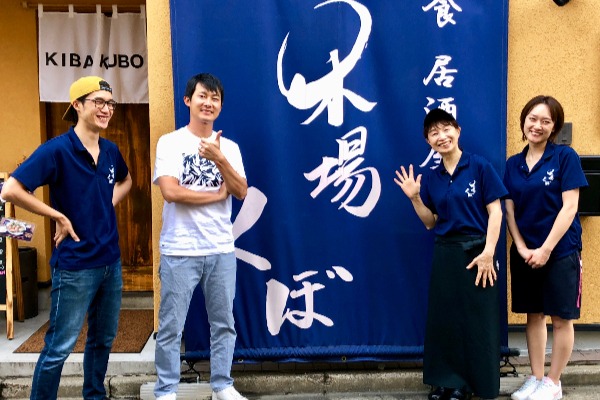
It’s a real family affair. Mother Taeko is a qualified chef and nutritionist who enjoyed a long career as a cookery teacher and was featured in ladies’ magazines countless times. Her third son Yosuke, on the left here, spent ten years learning his trade in a well-known Ginza restaurant. Eldest son Hiromi, a former advertising company employee, is the manager and owner, ably assisted by his charming wife Moe, a sports teacher. Second son Kazato is a designer and was responsible for the interior and exterior design of the restaurant. A talented family!
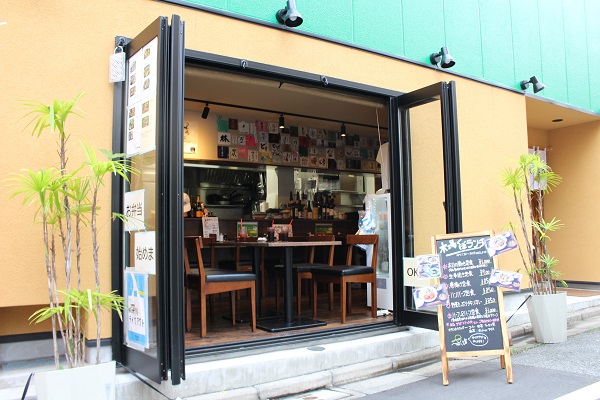
“Kibakubo opened in 2019,” explained Mr. Kubo”. We remodeled what was the garage of our house into the restaurant and live upstairs. This being our home area where we grew up and went to school, we obviously know a lot of people and specifically wanted to create a place for local residents to meet up, whether for morning coffee, lunch or dinner”.
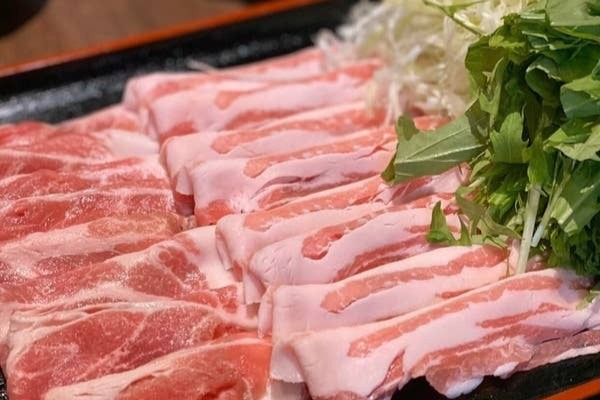
While the initial concept behind Kibakubo may have been a neighborhood locus, its reputation has quickly spread far beyond the locality into the whole Kanto area. The main dinner focus is on shabu-shabu, the popular hotpot dish where diners cook the meat and vegetables themselves, in a broth based on kelp (kombu). Kibakubo specialises in pork shabu-shabu rather than the usual beef, and uses a broth based on bonito, instead of kelp. Chef Yosuke Kubo gained experience at a Ginza shabu-shabu restaurant, then he and his mother developed the broth by a process of trial and error. Its exact contents are a secret!
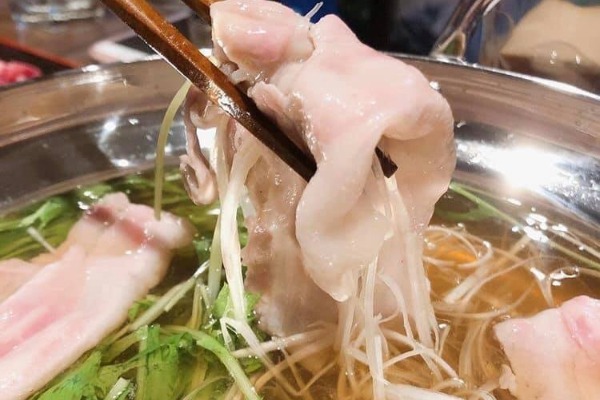
Kibakubo serves three varieties of branded pork. Sangenton (1,700 yen) is a meaty pork with plenty of fat, Iwachu (2,200 yen) is noted for its superior fat flavour, and Kamui (2,000 yen) is somewhere in between.
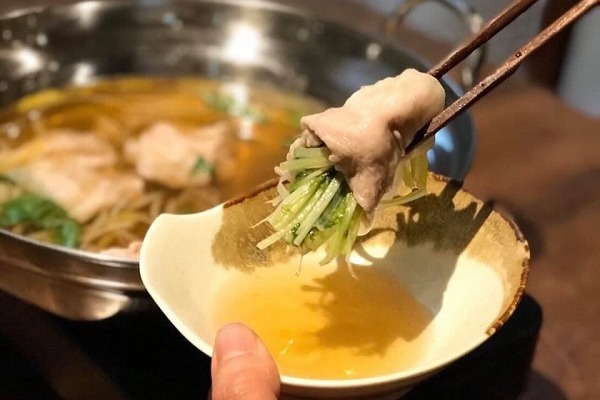
A selection featuring all three plus negi onions and Japanese mustard greens is a very reasonable 2,500 yen. Simply dip the pork in the bubbling broth, wrap up some vegetables and eat with a dipping sauce such as sesame or the tangy, citrus-based ponzu.

Chef Yosuke’s long-standing relationships with fish wholesalers in the former Tsukiji and current Toyosu markets allow him to acquire top-quality, fresh fish at reasonable prices. Such is the quality that even local residents in the restaurant or food business drop in to Kibakubo to enjoy the fish, both raw and cooked. Rare fish such as roughscale sole (samegarei) or rose fish (akodai) may also be available alongside the seasonal favourites.
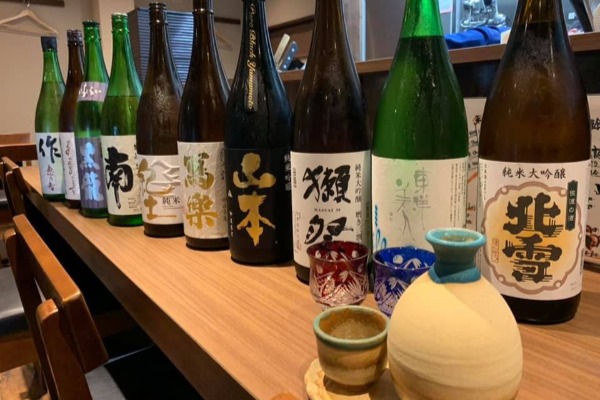
While the drink menu isn’t enormous, the selection is designed for pairing with the more popular dinner items. The sake menu features some rare and more unusual brands, particularly of the light and fruity style which match dishes such as shabu-shabu and also appeal to the many female customers. A wide variety of shochu is available and there are several wines on the menu. Draft beer is Asahi Super Dry.
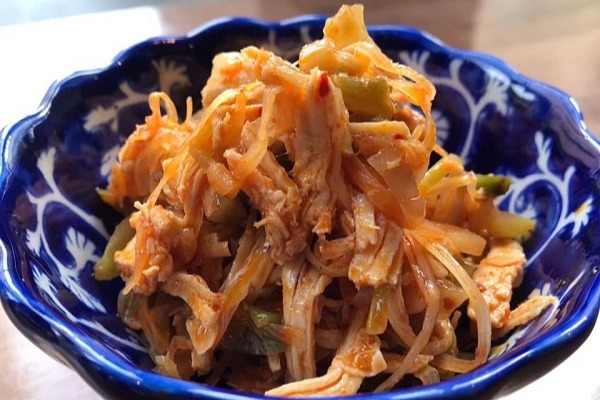
The daily menu at Kibakubo is bursting with tasty treats, such as this spicy chicken with pickled mustard plant stem (zasai) and finely sliced white negi onion. At only 460 yen, it goes nicely with white rice and a glass of sake.
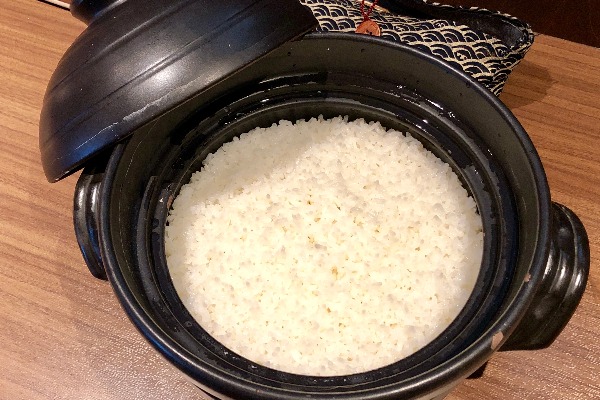
The Kubos are as fastidious regarding their rice as the rest of the menu. They serve Hitomebore rice sourced directly from an Iwate grower and cooked in an earthenware pot. The rice is prepared twice a day, once at lunchtime and again in the evening. It has a glossy, bright look with a slightly sweet flavour.
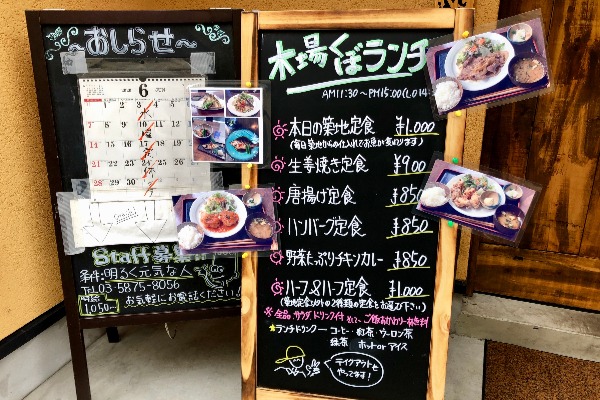
The lunch menu features a variety of popular sets: a “Tsukiji” set featuring seasonal fish, pork and ginger (shogayaki), deep-fried chicken (karaage), hamburg steak, and chicken and vegetable curry were among the items available on the day we visited.

“I go to Tsukiji in the morning and have a good look at all the fish available,” says Mrs. Kubo. “Then I make a selection based on what’s best and plan the specific dishes from there.” This particular day was sardines rolled with pickled plum (ume) and shiso (perilla leaves), then deep-fried. Served with a salad, pickles, rice, and miso soup it makes a healthy, nutritious lunch for just 1,000 yen.

This Tsukiji lunch set features a gently simmered fish together with sashimi, pickles, soup, and rice. Mrs. Kubo’s 30-year career as a cookery instructor shines through in these dishes!

The deep-fried chicken set is made without garlic but with plenty of ginger. All deep-fried items are cooked after the order is taken.

Both this hamburg lunch set and the chicken lunch are a very reasonable 850 yen.
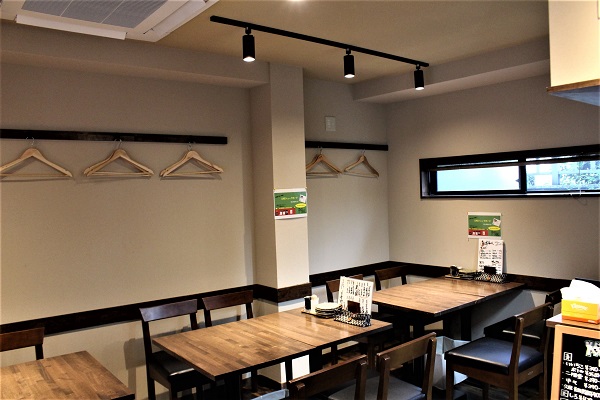
Aside from the main room with the counter and kitchen area, there’s a comfortable back room with plenty more seats.

The back room features this outstanding painting of Kibakubo on a theme of the festival.
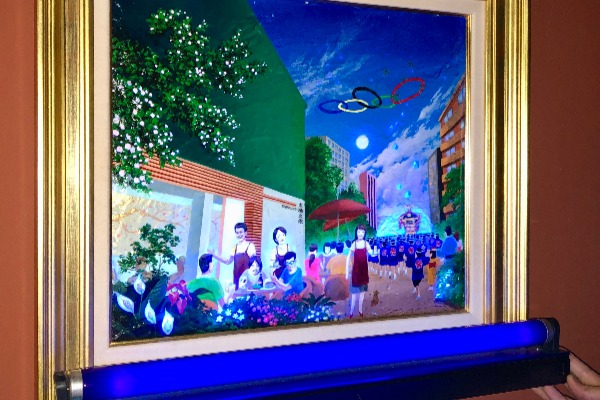
It takes on another dimension under black light!
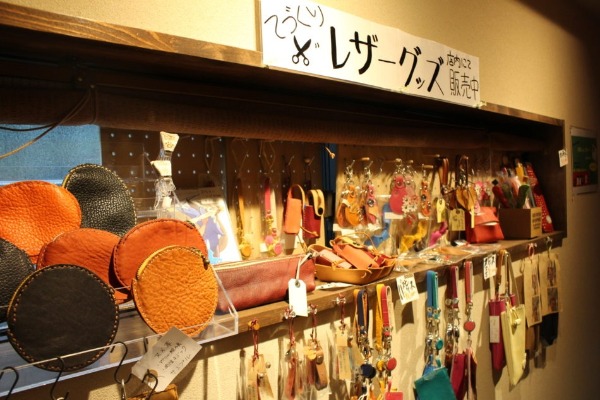
As if being a chef, a cookery teacher, and running a restaurant weren’t enough, Mrs. Kubo somehow finds time to make leather goods, which are on sale in the restaurant. Coin cases, key fobs, mobile phone cases, and the like, all handmade, all unique and all at very reasonable prices.
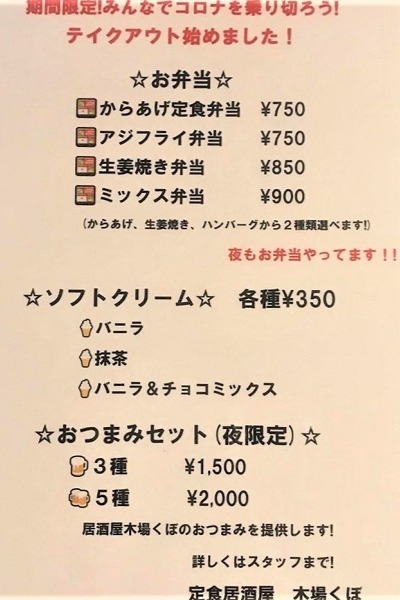
A take out menu is also available for local residents or workers. Fried chicken (750 yen), deep-fried horse mackerel (aji fry 750 yen), pork and ginger (850 yen) and a mixed set featuring two of fried chicken, pork and ginger and hamburg for 900 yen. Three varieties of soft cream are also featured, for those with a sweet tooth. Mrs. Kubo also makes fantastic cheesecakes, by all accounts. The atmosphere created by the warm and friendly Kubo family was very pleasant indeed. In fact, it felt more like being in someone’s house than a restaurant, which I suppose it is. If you’re in the area, do yourself a favour and drop in. You won’t regret it!
Story and some photographs by Stephen Spencer


